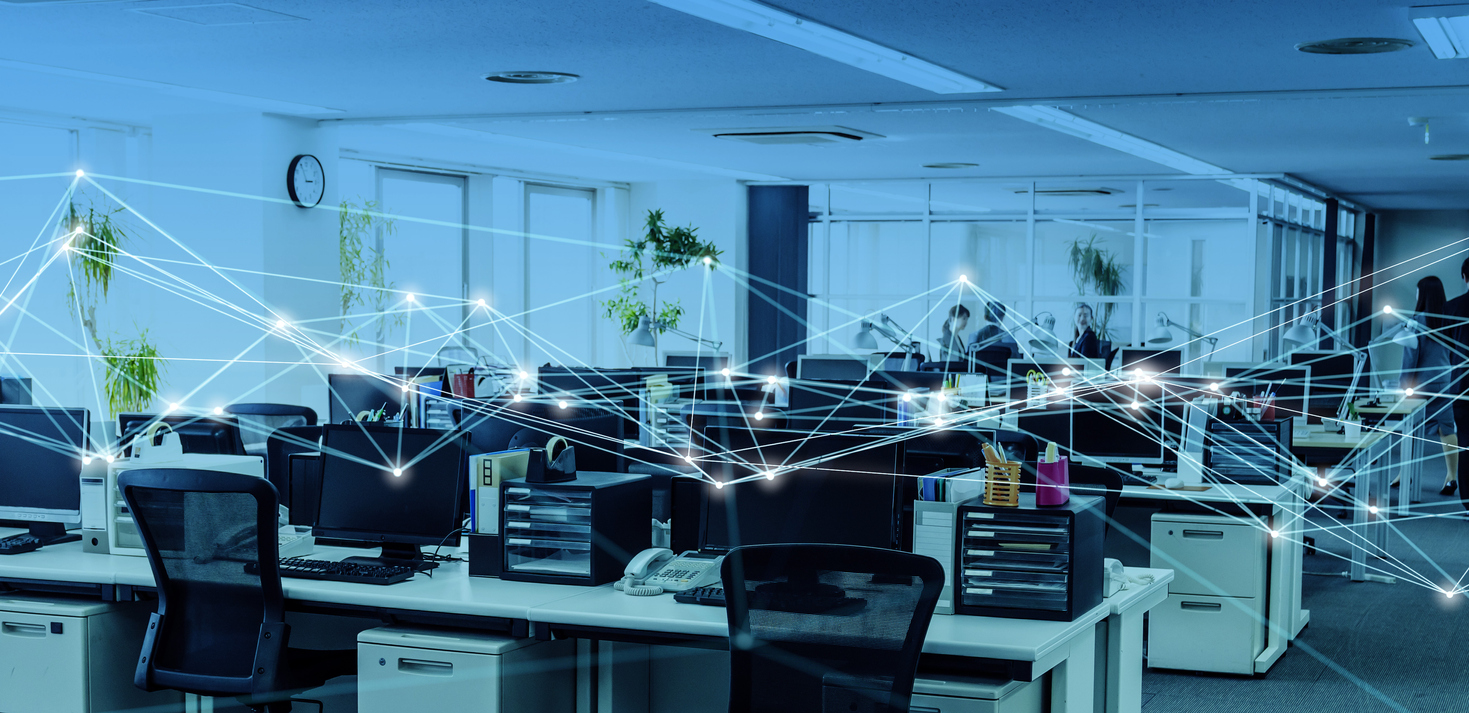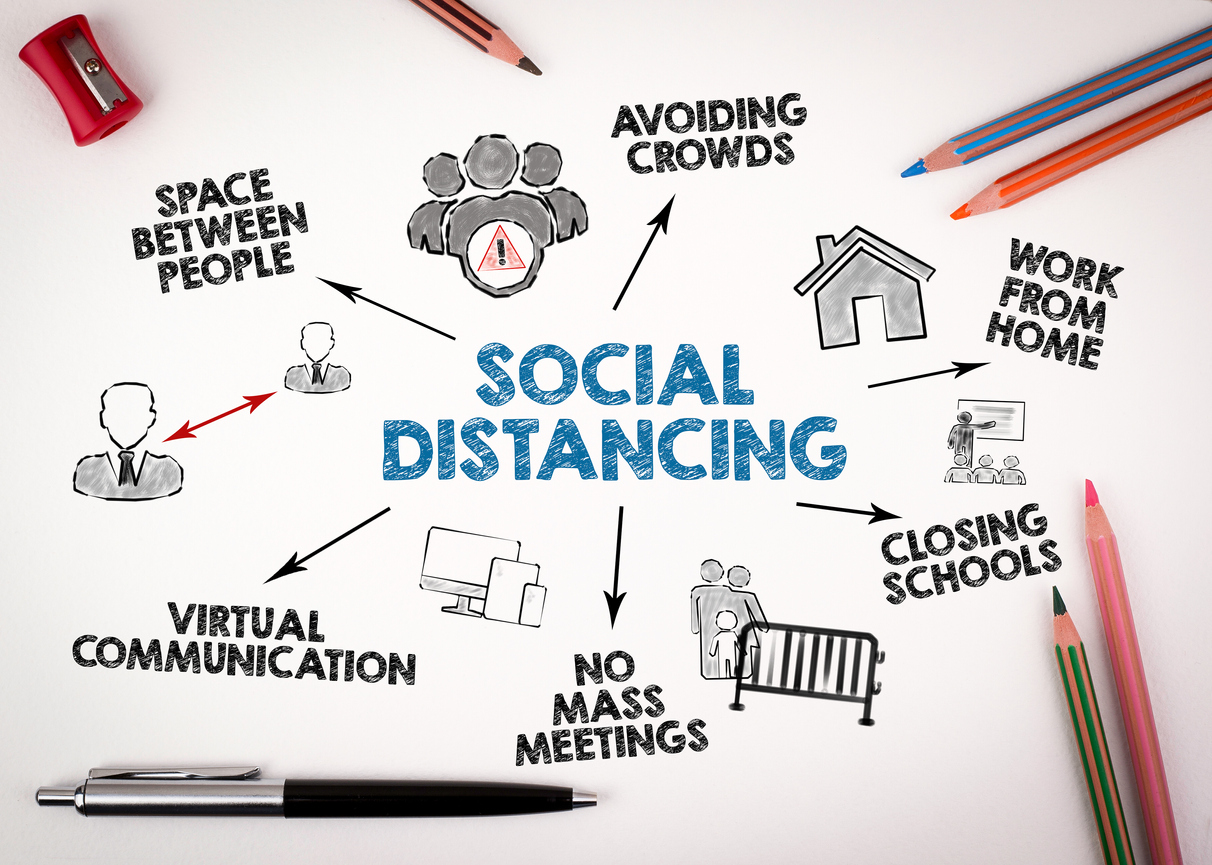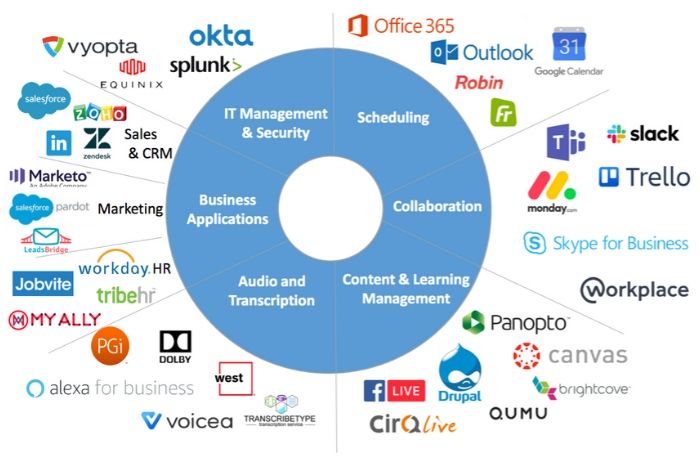The good news on the horizon with respect to the Covid-19 pandemic and the dramatic increase in vaccinations given around the U.S. means the day is coming when businesses can have their employees return to work in the office. After more than a year of remote work and the adjustments that have come from a dispersed workforce, in-person collaboration and meetings will be a welcome change for many organizations.
But experts who monitor workplace habits and behaviors are saying it’s unlikely that the workplace in 2021 and beyond will look exactly like it did in early 2020, before the pandemic hit. The convenience and proven effectiveness of remote collaboration tools like Zoom, Microsoft Teams and Google Meet are expected to keep them in use, even after the return to work begins to gradually take place in the summer and fall.
And caution and safety protocols will be top of mind from the start, with companies looking to stagger shifts in the office as well as enforce social distancing measures initially.
“There’s a scientific way of thinking that no one is really safe until everyone has had the vaccine, as opposed to you’re safe once you individually have had the vaccine, so there’s that kind of idea of collective safety and well-being being different,” said Kamalina Czerniak, Vyopta’s senior manager of product marketing.
“I don’t think the return to work transition is necessarily going to happen extremely quickly. While many companies and industry publications are predicting that it could start to happen in August, September… especially in the U.S. where people could start to go back to offices on a much wider scale, we have to keep in mind that these vaccines are not yet approved for children or for necessarily every single group.”
Big changes likely with return to work
The possibility of ongoing remote work arrangements following the close of the pandemic in the next 12 months has caused many companies to reconsider their real estate needs for the next five-plus years. More remote workers could mean a smaller footprint even when social distancing considerations are factored in, with more huddle rooms and video endpoints on desks among the changes that will provide the flexibility needed to keep productivity high.
Czerniak said meeting rooms will be important targets for reuse or renovation, with those spaces used for everyday work as well as for holding large gatherings in person or via remote video. This will create not only a hybrid work environment where workers split time between home and the office, but a “tri-modal” structure where remote video meetings will take place between people who are in the same office.
“The conference rooms that exist and the places where people hold meetings, they may still be having some element of social distancing policies going on in those places. We will find that many people will be going to the office, but will be joining meetings remotely,” Czerniak said.
The variety of work habits and usage of unified communication and collaboration tools after the return to work makes it important for companies to get as much precise data as possible about how tools are performing and how they are being used by employees.
There may be established routines for remote workers that IT and UC teams have adjusted to over the past year, but bringing people back into the office in groups that are certain to change and evolve going forward means constant monitoring of call quality and usage is a must-have capability.
Czerniak said companies armed with the right data will be able to make the best decisions about the tools they use, what groups are most productive and how the rhythms of the hybrid workplace can be adjusted for maximum efficiency.
“What most companies lack today is visibility to understand the patterns of the flow of people within their workspaces. They’re going to be turning to ways to better understand that because it’s going to help them to plan whether certain people on different floors come into certain spaces at different times, or whether they end up using hotel desking methods more than dedicated desks,” she said.
“It’s not clear when people will pick up and start really investing in reorganizing their workspace, because in many cases they’re still trying to understand and set the policies for what the new normal will be.”
Want to see how Vyopta can help your team with improved monitoring and analytics? Take the Guided Tour.
Chad Swiatecki is a business writer and journalist whose work has appeared in Rolling Stone, Billboard, New York Daily News, Austin Business Journal, Austin American-Statesman and many other print and online publications. He lives in Austin, Texas and is a graduate of Michigan State University. Find him online on LinkedIn.








